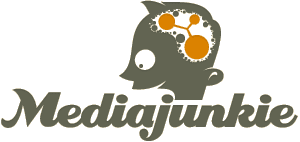I thought it might be interesting to listen to the panel on how large enterprises ought to choose their design partners. The lineup had changed a bit from what was listed in the SXSW directory.
The moderator was now Maddie Coover of Alamo Design and formely of Omnicom (the owner of Agency.com). The panelists were Jeff Williams of Frog Design in Austin; Christian Barnard, AT&T’s executive director for online experience and user strategy (he oversees the relationship with their design partner, Razorfish, and used to be a director and client partner at Sapient, and before that worked at Scient); and Mike Appel, VP and general manager for the south-central region of of AvenueA/Razorfish, which he says is the “largest independent interactive agency in the world today” and formerly Anderson Consulting in Dallas.
Williams went first and he was excellent. Here are my raw notes from his talk (accompanied by a slide deck):
Frog started as a product company, is strategic/creative. Model is “identify, transform, implement.”
Some of their partners (clients):
- Tmobile – strategic partnership, worked on extranets and flash apps and not just a tactical website redesign
- Sun.com… home page used to be 150 times as long, 1000s of links (when?), also extending web design to brandingpackaging and software
- Disney: digital, product, embedded ui, packaging, etc.
- HP is our largest partnership now. We are their master vendor. HP knows the value of design, doesn’t second-guess a lot of decisions.
Clients sometimes ask you to copy something else out there. Copying the competition gives parity but not innovation.
To clients: don’t ask for work on spec, if necessary for a design competition.
Christian Barnard explained how SBC (not AT&T) ultimately chose AARF to redeisgn their website:
Identified need in June 2004, not until April 1, 2005 for first delivery (from Razorfish).
Sent an RFP to 16 agencies, received responses from 9 agencies, narrowed the field to 5 finalists, brought them in for oral presentations, chose top two finalists, got internal approvals, started vendor negotiations, started with an initial trial quick-hit project with chosen vendor, then jointly developed the plan to redesign SBC.com.
Our decision criteria:
- experience (UE, web tech): 25%
- partnership (plans for organizing the partnership): 15%
- reliability (proven ability to execute against commitments): 15%
- cost: 13%
- capacity for handling overflow UI/IA work: 11%
- financial stability: 10%
- communication / decision making (ability to comm., methods to ensure decisions made in a timely manner): 6%
- logistics (extent to which vendor locations / resources align with SBC): 5%
We developed their online visions and a strategy roadmap with the vendor and internal stakeholders. Goals were to increase sales by 10%, reduce costs, get calls out of call center, and enable self-help online. The roadmap plotted out a five-year strategy, and broke up the redeisgn into meaningful phases (home page/public site, account management, product ordering).
AT&T does their own backend work but the vendor has to know the constraints.
Baptism by fire: the home page redesign was phase one. The old SBC page had 100+ calls to action, lots of content, not very useful. The business objectives: purchasing and account management.
We used an “advanced optimization” tool
The home page had to be done over because of the merger with AT&T, the new brand (worked with InterBrand)
Phase two was MySBC, account mgmt. For this they did rigorous user research, ethnographic research, contextual inquiry to inform the design process. Our partner had to understand the business aspects and how to develop user insight. We went into customer’s homes, to see beyond how they interacted with the existing site: how they work with paper bills, feel about them, interact with them, file them afterward, to meet their needs online.
The current initative: redesigning the shopping & ordering process.
Held an offsite lessons-learned retreat:
Works Well: Program Communications (master list of milestones, deliverables; overall creative brief stating the goals, objectives, and overall direction of the resdesign), Collaboration (strat and tactical, building consensus with stakeholders)
Needs Improvement: Focus on vendor morale (recognition, celebration, empathy, career growth)
Project Guiding Principles: face-to-face meetings, work-life balance (treat vendor like employees.
I found Appel’s presentation disappointing. To be fair, he was probably a late addition to the panel, but instead of general principles or advice or case studies we got a capabilities presentation.
Also, he repeated the AARF is the largest independent agency in the world, but I’m not sure what he means by independent. Independent of what?
Criteria companies should consider: Customer lifecycle (attract, convert, service, extend).
Why choose AARF? Thought leaders in digital channel, proven track record helping major brands improve performance (increased Adidas online sales 500%), deep technology experience, data-driven business optimization (tools to measure performance).
My only other note was “this feels like an ad for the ‘fish.”
tags: sxsw2006, sxsw
